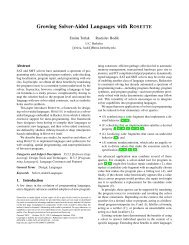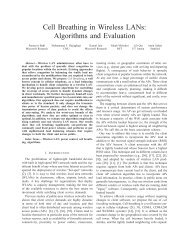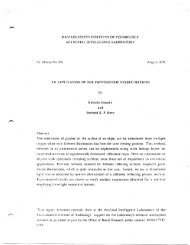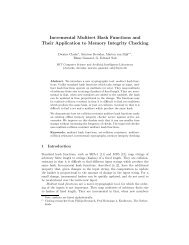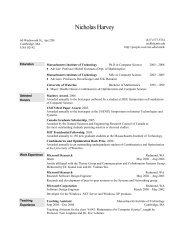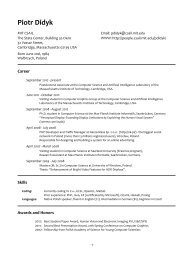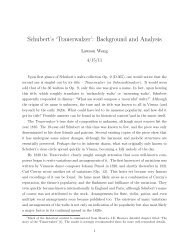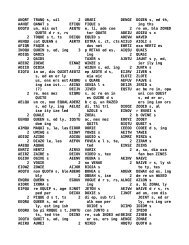Prism User's Guide - CSAIL People - MIT
Prism User's Guide - CSAIL People - MIT
Prism User's Guide - CSAIL People - MIT
Create successful ePaper yourself
Turn your PDF publications into a flip-book with our unique Google optimized e-Paper software.
)<br />
Chapter 6 Obtaining Performance Data 105<br />
Chpe 6.OtiigPromneDt 0<br />
6.4.1 Collecting Performance Data outside of <strong>Prism</strong><br />
You can also collect performance data by setting environment variables, without<br />
entering <strong>Prism</strong>. This is convenient if you can't enter <strong>Prism</strong> for some reason (for<br />
example, because the CM is only accepting batch jobs).<br />
To turn on collection of performance data, set the environment variable CMPRO-<br />
FILING to t:<br />
% setenv CMPROFILING t<br />
To turn collection off, set the environment variable to f.<br />
To specify the program on which data is to be collected, set the environment<br />
variable CMPROFILING EXECUTABLE FILENAME to the name of the executable<br />
program. For example:<br />
% setenv CMPROFILINGEXECUTABLE FILENAME a.out<br />
To specify the file to which the performance data is to be sent, set the environment<br />
variable CMPROFILING_DATA_FILENAME to the name of the file. For<br />
example:<br />
% setenv CMPROFILING_DATA FILENAME perf.data<br />
You can load this file into <strong>Prism</strong> for examination at a later time; Section 6.7<br />
explains how.<br />
6.5 Displaying Performance Data<br />
To display performance data, the program must have finished execution. Choose<br />
Display Data from the Performance menu. A window appears, containing the<br />
data. Figure 33 shows an example.<br />
Version 1.2, March 1993<br />
Copyright © 1993 Thinking Machines Corporation



